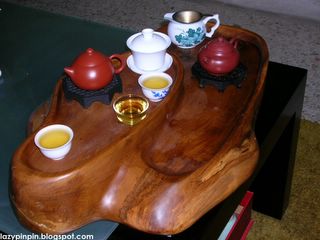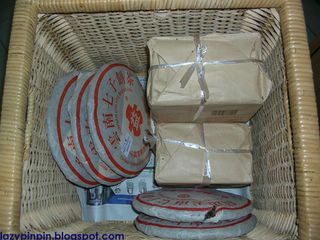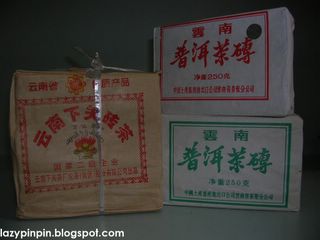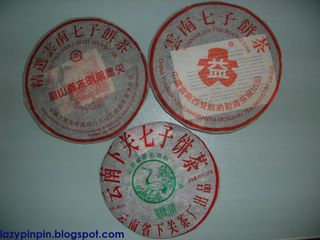There's actually a reason why Chinese tea is the best beverage to go with dim sum (other than the fact that dim sum is a Chinese food too). Chinese tea helps to resolve fat and promotes digestion. It is definitely the best choice for a breakfast that is high in saturated fat and sodium.
Chinese tea can be loosely grouped into three general categories according to the different methods by which it is processed:
- green tea - tea leaves without fermentation during processing. Normally only tender leaves are used for making green tea, and the tea leaves should not be kept for too long to preserve its freshness and flavour. The most famous and expensive green tea would be Long-jing tea.
- Oolong tea - partially fermented tea leaves. There are a variety of tea that fall into this category and each has its unique aroma and aftertaste.
- black tea - tea that is fully fermented before drying. One type of such tea is Pu'er, which some people may consider it under a category of its own. Pu'er tea is normally compressed into different shapes, and its quality and taste improve with age.
In the afternoon, 贝 and i went to our regular tea shop to buy some Chinese tea. 贝 is a Chinese tea lover. Not only does he drink Chinese tea everyday, he also uses different pots for different types of tea, as this is said to draw out the best flavor of the tea. After he finishes drinking the tea, he would always clean the tea set with great care and dedication. He also has this hobby of "tea pot nursing" ("养壶"), in which the Chinese clay tea pot is diligently wiped after tea brewing so that the pot would become lustrous. He would also dry the used tea leaves under the sun and accumulates them in a container for making pillow.

Bei's Chinese tea set
Lately the Pu'er tea is extremely popular, so much so that the prices have been increasing like bull market. What used to be a tea that common people could afford has become so precious -- a piece of Pu'er tea cake bought about 10 years ago at RM12 can be sold at approximately RM100 if it's of good quality and have been properly kept. Some people are betting on its value to apprize so they buy a lot to keep as an investment, but how long can its popularity last is really anyone's guesses. However, one good thing about Pu'er is that it's the kind of tea that gets better with age; thus if the prices drop in the future, the tea can still be kept for consumption for many years to come.
贝 also jumped on the bandwagon and spent RM660 on 2 full baskets (with 7 pieces in each basket), not for investment but for personal collection and future consumption.

Receipt for 2 baskets of Pu'er tea

Pu'er Tea


Pu'er tea kept in wicker basket


Pu'er tea bricks and tea cakes
I actually prefer Long-jing and Oolong tea to Pu'er. I love the aftertaste that gives me the feeling of freshness and spring, as opposed to Pu'er that has an earthy flavour. There are, however, plenty of benefits in drinking Pu'er, one of which would really please the female -- its ability to reduce fat and help with weight control. For someone like me who is growing horizontally, this benefit can definitely make up for its taste that is less appealing to my taste bud.

